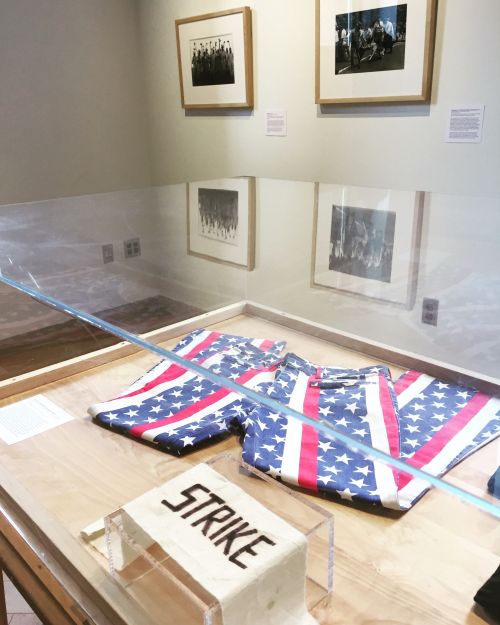Curated by Museum Studies students in Professor Susan J. Bandes’s Curatorial Practices course, this exhibition explores a variety of ways in which dress defines and gives identify to a person or group of people across the globe.
April 21, 2017 – May 10, 2017
Each object in this exhibition speaks to the ways in which dress can form identity. Identity may be self-constructed and chosen by the wearer, such as the choices made to join the Ku Klux Klan or to squeeze into a tight-fitting corset. Alternatively, identity may be imposed on a person, for example, those who are outfitted with a prison or army uniform. What one wears affects not only a person’s sense of self but also our perception of that person.
Some of the traditions explored in the exhibition no longer exist. Some controversies surrounding particular clothing has faded from memory. Still other perceptions have changed over time. What did it mean to wear an armband with the word “Strike” in 1970? Or to manipulate one’s feet to fit in the small, exquisitely made “lotus” shoes”? How were bell-bottom jeans patterned with the stars and stripes of the American flag controversial? These questions and many more are asked in this exhibition by considering objects dating from the late 19th century to the present day. From America to Africa, China and the Middle East, our clothing reflects religious, political, social, economic, historical and environmental considerations. Whether for work or play, dress provides a myriad of ways to understand who we are.
Professor Susan J. Bandes
Museum Studies Program at Michigan State University
Twenty-three student co-curators in the Museum Studies AL 488 Curatorial Practices course have spent this semester working on the exhibition. First, they chose an object from the Eli and Edythe Broad Art Museum or the MSU Museum collections. They studied it object carefully, researched its history in a larger context, wrote the label, and participated in the mounting of the exhibition. The students are from diverse backgrounds and a variety of majors including art, art history, anthropology, education, history, media information, English, French, German, professional writing, and advertising. From these different perspectives, they came together to think about “dress” in new ways and to learn what it means to curate museum objects.
Exhibition Co-Curators
Caylee Allen, Steph Archambeau, Kathleen Bailey, Katy Bahrami, Victoria Bonadies, Karely Byrd, John Dinges, Susan Edminster, Madison Kautman, Emily Kiewicz, Mary Peacock, Madison Piatek, Alli Rayburn, Patrick Reynolds, Jake Roberts, Krsna Santos, Audrey Schaefer, Jasmine Smith, Lucy Steele, Calla Sundin, Lauren Utykanski, Stephanie Vettese, Delacey Yancey





